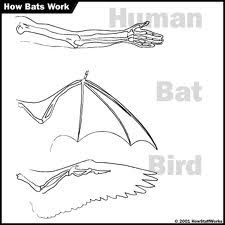See
how I tricked you into reading about one of my favorite animals, bats. No,
don’t stop reading, please! You’ll be so glad you did if you continue to the
end. Bat populations are declining worldwide, mostly due to myths and
misconceptions. Over half the bats in the US are listed as rare, threatened, or
endangered.
A
couple of years ago, Darling Daughter 2 and I attended a seminar on bats at
Weston Gardens in Fort Worth. Dottie Hyatt, Vice-President of Bat World in
Mineral Wells, Texas (www.batworld.org )
brought bats and lots of information. Darling Daughter and I learned so much
cool stuff that I’m going to share some of it with you.
1.
Bats are an integral part of most ecosystems, yet they are the most
misunderstood animal on earth. Only through education can we change ecological
devastation going forward. Bats are the greatest pesticide available to
mankind.
There
are over 1100 species of bats in the world and only three are vampire bats,
limited for the most part to Latin America. Vampire bats are very small and do
NOT attack humans. They prefer to get their teaspoon sized meals from other
animals. The remaining 1097 bat species
eat insects, fruit, nectar, and pollen. A few species eat fish and frogs.
Insect-eating bats eat billions of tons of insects each summer. They protect
our crops and keep costs down at the marketplace. Fruit bats bring us over 450
commercial products and 80 medicines through pollination and seed dispersal.
Over 95% of rainforest regrowth comes from seeds that have been spread by fruit
bats.
2.
Bats don’t carry rabies. They are capable of catching the disease just like any
other mammal. In reality, more people die annually from contact with household
pets than have died with contact from bats
in all of recorded history. Misconceptions about bats are due in part to
Hallowe’en lore that presents them as scary, blood-sucking creatures that carry
rabies. In fact, less than one-half of one percent of bats contract rabies.
This doesn’t mean it’s okay to touch or handle bats. They may be afraid and
bite in self-defense. Bats are wild animals and all wild animals can be
dangerous. Grounded bats are more likely to be sick and should never be rescued
bare-handed.
3.
One bat can eat up to 5,000 mosquitoes in a 24-hour period. The little animals
are very vulnerable to chemicals, however. If you spray for mosquitoes and
other insects, you are likely to also kill bats and prevent them from acting as
living pesticide and pollinators.
 |
| Can you resist this cutie? |
4.
Bats are very clean. They spend enormous amounts of time grooming, much like
cats do. They are intelligent and have a
sense of humor. Antonia Lollar, who founded Bat World, has had them play tricks
on her that would astound everyone. Ms Lollar says “They’re the least appreciated mammal on the face of the earth.”
5.
Bats are not flying mice. They are not even remotely related to rodents. In
fact, they are built more like a human, and their wing bones are like those of
a hand and arm. They are so unique that scientists placed them in a group of
their own, Chiroptera, which means hand-wing.
6.
Bats are not blind. Most bats see as well as humans. Fruit bats also have
eyesight adapted to low light, much like cats, and may see in color. Many bats
also use echolocation to catch insects and fly at night.
7.
Bats are shy, gentle, and highly intelligent. They are among the slowest
reproducing animals on earth. Most bat species have only one live young per
year. The average life span of a bat is
25 to 40 years!
 |
| All tucked in for sleep |
8. Bat feces, called guano, is the richest
fertilizer available. So rich, that it must be diluted when used.
In
1994, Amanda Lollar founded Bat World Sanctuary, the organization’s first
sanctuary for non-releasable bats. Hundreds of bats from around the world have
found permanent refuge at this indoor, natural habitat facility. These
non-releasable bats include those that have been used in research, retired from
zoos, orphaned, permanently injured or confiscated from the exotic pet trade.
Bat World is located in Mineral Wells, Texas and serves as headquarters for the
organization. Aside from this facility, Bat World has established rescue centers
across the US. Bat World Sanctuary has been featured on television programs on
the Discovery Channel, 20/20 Downtown, Animal Planet, Nickelodeon, the CBS
Early Show and Late Night with David Letterman.
Darling
Daughter One gave me a bat box and Hero mounted it on a light pole.
Instructions for building a bat box are available online from the National
Wildlife Federation or you can purchase one already built from a garden center near you. They must be mounted at least ten feet from the
ground to give the residents time to swoop. Bats don’t take off from the
ground, but drop to begin their flight.
I
wanted to share my fondness for these gentle animals. I hope you enjoyed the
post.


What a wonderful post. That must have been a fantastic class to attend. I love bats too. they are so under-rated and misunderstood.
ReplyDeleteGood summary for understanding the value of bats to our eco-system. Too many people prefer to overlook the wonders of nature, which explains why we're losing so many.
ReplyDeleteThankyou.i totally agree about how important they are too. In Wamberal on the central coast of new south wales Australia there's a bat sanctuary. Unfortunately like you say many humans are misinformed of their importance to the ecosystems. Good on you for what you do, i applaud you and others like you... Carrie from Australia 😀
ReplyDelete